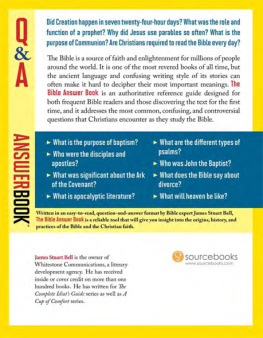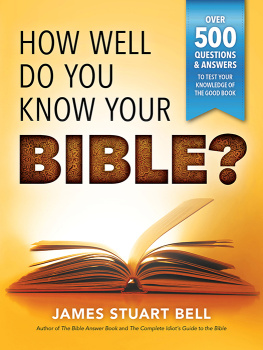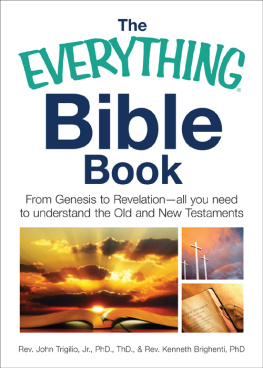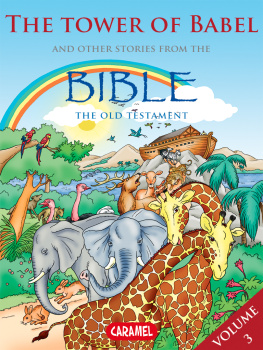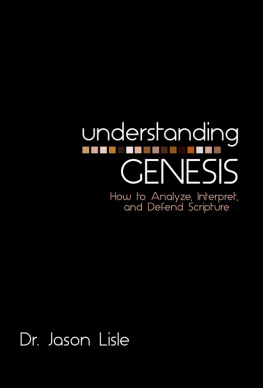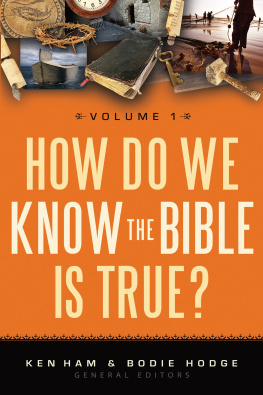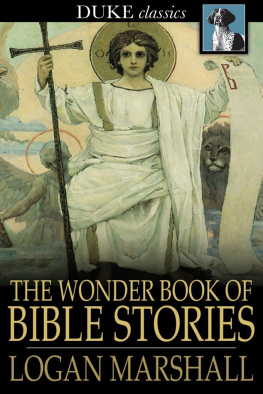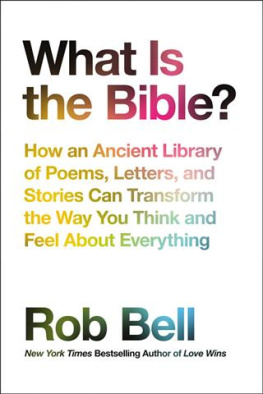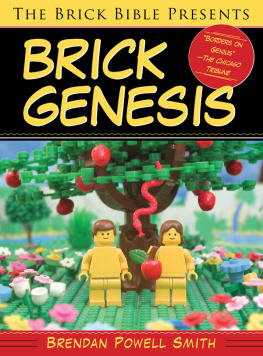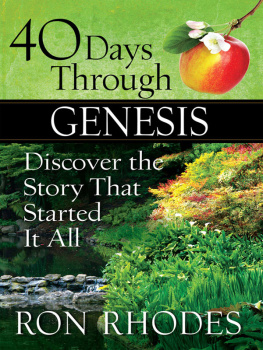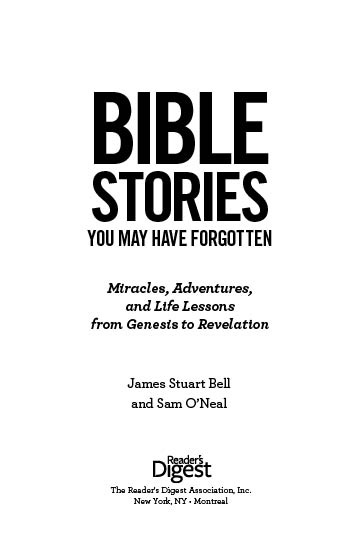
A READERS DIGEST BOOK
Copyright 2013 The Readers Digest Association, Inc.
All rights reserved. Unauthorized reproduction, in any manner, is prohibited.
Readers Digest is a registered trademark of The Readers Digest Association, Inc.
Library of Congress Cataloging-in-Publication Data is available upon request.
ISBN 978-1-62145-003-0
We are committed to both the quality of our products and the service we provide to our customers. We value your comments, so please feel free to contact us.
The Readers Digest Association, Inc.
Adult Trade Publishing
44 South Broadway
White Plains, NY 10601
For more Readers Digest products and information, visit our website:
www.rd.com (in the United States)
www.readersdigest.ca (in Canada)
Contents

Introduction
Its no exaggeration to say that allusions from Biblestories still remain part of our everyday lives. When you accuse someone ofbabbling on and on, or describe your friend as a Good Samaritan, you may notrealize you are referring back to the biblical stories of the Tower of Babel andJesuss parable of the Good Samaritan. The Bible has been the worldsbest-selling book for hundreds of yearsand no book can match its sales figures,even today. In fact, Bible sales make the sales of the Harry Potter and HungerGames series and every other book pale in comparison.
When we dig below the surface of our cultural fads and preferences, we find the Bible in a surprising number of places. For example, if youve ever told someone not to take an eye for an eye, thats from the Bible. those phrases are from the Bible, too.
On the other hand, some people view the Bible, especially in its older editions and translations, as a piece of antiquated history. Its a huge tome, for one thingmore than two thousand pages in most versionsand people have trouble with those thin, flimsy pages and the archaic, tiny print. The Bible also describes ancient, unfamiliar traditions and customs, and the people who quote from it often sound like theyre reading Shakespeare when they say thou and thine and all that. They dont realize there are many user-friendly versions of the Bible, with scores of notes and modern analyses in which these timeless narratives come alive. This is what we have attempted to do in this volumemake some of the major stories accessible, enjoyable, and inspiring.
The Bible is a major influence on the moral and social codes that teach us whats right and wrong, acceptable and unacceptable. Its where our society learned the Golden Rule, for examplethat we should treat others as wed like to be treated. are the foundation of the Western judicial system.
Even our primary forms of entertainment have at times been (and continue to be) heavily influenced by the Bible. Most examples of great literaturefrom Shakespeares works to Dickens to Cormac McCarthycontain several allusions to scriptural texts and events, as do the works of several great songwriters, including Bob Dylan, Johnny Cash, Sting, and many more. Even movies and television have mined the Scriptures for decades. Just a couple of examples: you cant really understand some of the themes in The Matrix without a basic knowledge of the Bible; and biblical themes are implicit in The Lord of the Rings .
When you get down to it, we shouldnt be surprised by the Bibles entrenchment in modern society. Stories have always had the power to move us, motivate us, unsettle us, and inspire us to become the people weve been created to be. And at its core, the Bible is a collection of some of the best-loved and most influential stories ever told.
Youll find a lot of those stories summarized in the following pages. As you read, keep in mind the different ways these stories have influenced not only the outside world but your own life as well. Perhaps your mother first read them to you as you sat comfortably in her lap; perhaps you heard them in Sunday school, or when you took a course in classic literature. Most important, whether youre experiencing them again or encountering them for the first time, allow yourself to be enriched as you dig into Bible stories you may have forgotten.
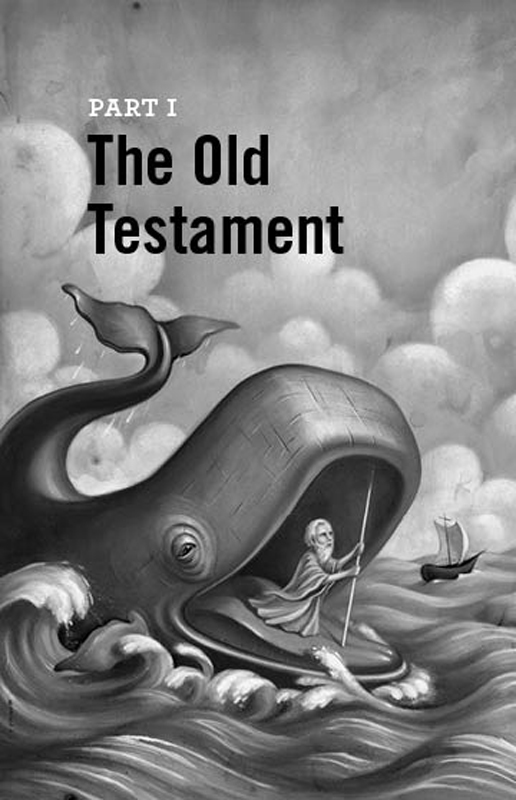

One Bad Apple
Spoils the World
Adam and Eve
(Genesis 2:153:24)
When you hear the word paradise, what images come to mind? Maybe you think of a deserted islandsandy beaches surrounded by clear, crystal-blue water. Or maybe you picture mountains covered with the kind of powdery snow thats perfect for skiing. Maybe its a bustling city street packed with gourmet restaurants and Starbucks coffeehouses on every corner.
Whatever your particular vision of paradise may be, try to hold it in your mind as we explore the story of Adam and Evethe first human beings to live, love, cry, and die on planet Earth.
A Single Guy
According to Genesis 1 (the first chapter of the first book in the Bible), God created the entire universe in just six days. He started with raw materials such as light, water, air, and land. Then He created specific objects to make use of those raw materials. He created the sun, moon, and stars to produce and reflect light. He created fish for the water, birds for the air, and plants and animals for the land.
Then, on the sixth day, God created His crowning achievement: human beings. Technically, though, He started by creating a single human being. That was Adam, the worlds first man.
If youre hoping Adam lived in the worlds first man cave, Im afraid youre out of luck. God actually planted a garden paradise in a land called Eden, and that became Adams home. According to Genesis 2, the Garden of Eden was filled with trees that were pleasing to the eye and good for food.
Adam wasnt a layabout; even inthe middle of paradise, he was given a job. Specifically, God made Adam asteward of His creation. That didnt mean Adam was the owner of the gardenor any other part of the created world, nor could he use and abuse creationto satisfy his whims. Rather, Adam was charged with the task of tending andcaring for both the garden he lived in and the other creatures that livedwith him. Adam even had the privilege of naming the different speciesof plants and animals as he saw fit.
For a time, everything was perfect. Adam was strong, smart, and confident. He found satisfaction in his work, pleasure in his connections with the other living things around him, and joy in his relationship with God, who had created him. It was a heavenly experience.
A Perfect Match
After a time, however, it became clear that Adam was unique among all the animals in creation. Whereas male birds could connect with female birds, and each squirrel scampering through the trees could find community and companionship among the other squirrels, Adam was alone. He was quite literally one of a kind.
In time, God remedied this situation by creating Evethe worlds first woman. Its interesting that God didnt create Eve from scratch, as Hed done with Adam. Instead, He performed the worlds first surgical procedure by placing Adam in a deep sleep (the worlds first anesthesia, apparently), removing one of Adams ribs, and using that bone as the raw material with which to create Eve.
Next page

